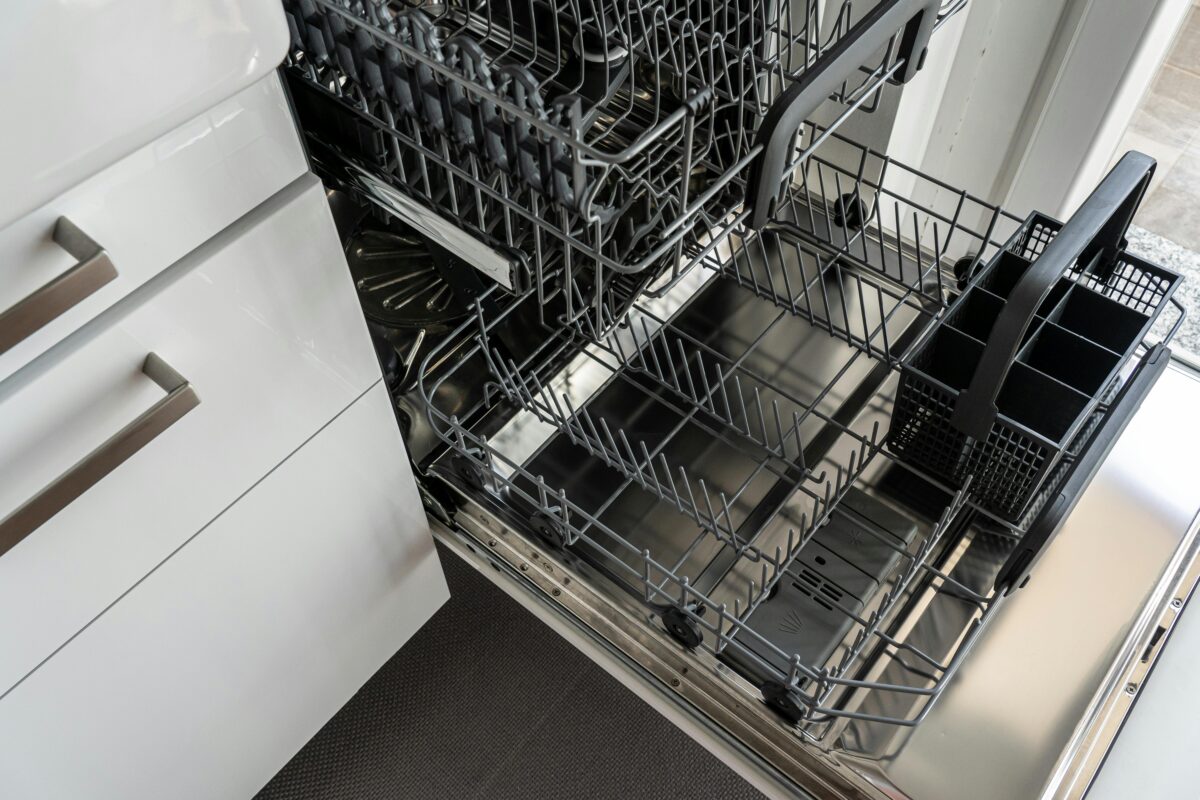Cleaning your dishwasher is essential for maintaining its efficiency and ensuring that your dishes come out sparkling clean. Over time, food particles, grease, and mineral deposits can accumulate, leading to unpleasant odors and poor performance. This guide provides a step-by-step approach to effectively clean your dishwasher, ensuring it runs smoothly and lasts longer.
Steps to Clean Your Dishwasher
#1 Empty the Dishwasher
Before starting the cleaning process, ensure that the dishwasher is completely empty. Remove all dishes, utensils, and any other items that may be inside. This allows you to access all areas that need cleaning.
#2 Inspect and Clean the Filter
The filter is a crucial component that traps food particles and debris. A clogged filter can lead to poor drainage and unpleasant odors.
- Locate the filter, usually found at the bottom of the dishwasher.
- Remove the filter according to the manufacturer’s instructions.
- Rinse the filter under warm water to remove any buildup. For stubborn debris, use a soft brush.
- Reassemble the filter once it is clean and dry.
#3 Wipe Down the Interior
Use a damp cloth or sponge to wipe down the interior surfaces of the dishwasher. Pay special attention to the door, door seals, and the edges where grime tends to accumulate.
- Use a mixture of warm water and mild dish soap for effective cleaning.
- For tough stains or mildew, a solution of vinegar and baking soda can be used.
#4 Clean the Spray Arms
The spray arms distribute water throughout the dishwasher. Clogs in the spray arms can affect cleaning performance.
- Remove the spray arms according to the manufacturer’s guidelines.
- Inspect for any blockages in the spray holes.
- Soak the spray arms in warm soapy water and use a toothpick to clear any debris.
- Rinse thoroughly before reattaching.
#5 Run a Cleaning Cycle
After manually cleaning the components, it’s beneficial to run a cleaning cycle using a dishwasher cleaner or natural ingredients.
- For a natural cleaner, place a cup of white vinegar in a dishwasher-safe container on the top rack.
- Run a hot water cycle. This will help dissolve any remaining grease and odors.
- Alternatively, consider using a commercial dishwasher cleaner, following the instructions on the package.
Tools and Materials Needed
Gathering the right tools and materials will streamline the cleaning process. Here’s a list of what you’ll need:
- Soft cloths or sponges
- Mild dish soap
- White vinegar
- Baking soda
- Toothbrush or soft brush
- Commercial dishwasher cleaner (optional)
- Bucket or large bowl for rinsing
Safety Considerations
While cleaning your dishwasher is generally safe, it’s essential to take some precautions to avoid accidents or damage:
- Always disconnect the dishwasher from power before performing any maintenance.
- Wear gloves if using strong cleaning agents or if you have sensitive skin.
- Ensure that the dishwasher is dry before reassembling and reconnecting to power.
Troubleshooting Common Issues
If you encounter problems while cleaning or using your dishwasher, here are some common issues and their solutions:
Unpleasant Odors
Persistent odors can stem from food debris trapped in the filter or spray arms. Ensure that these components are cleaned thoroughly. Additionally, running a vinegar cycle can help neutralize odors.
Poor Cleaning Performance
If dishes are not coming out clean, check for clogs in the spray arms or filter. Ensure that the dishwasher is loaded properly, allowing water to circulate freely. Running a cleaning cycle can also help improve performance.
Water Not Draining Properly
Water drainage issues may arise from a clogged filter or drain hose. Inspect and clean the filter, and ensure the drain hose is not kinked or blocked.
Maintenance Tips for a Long-Lasting Dishwasher
Regular maintenance can prolong the life of your dishwasher and enhance its performance. Consider implementing these practices:
- Run the dishwasher regularly to prevent stagnant water and odors.
- Use the right detergent and avoid overloading the dishwasher.
- Periodically check and clean the filter and spray arms.
- Leave the door ajar after a cycle to allow moisture to escape, reducing the risk of mold.
By following these cleaning and maintenance steps, you can ensure your dishwasher remains in optimal working condition, providing you with sparkling clean dishes every time. Regular upkeep not only enhances performance but also extends the lifespan of the appliance, making it a worthwhile investment for any household.
